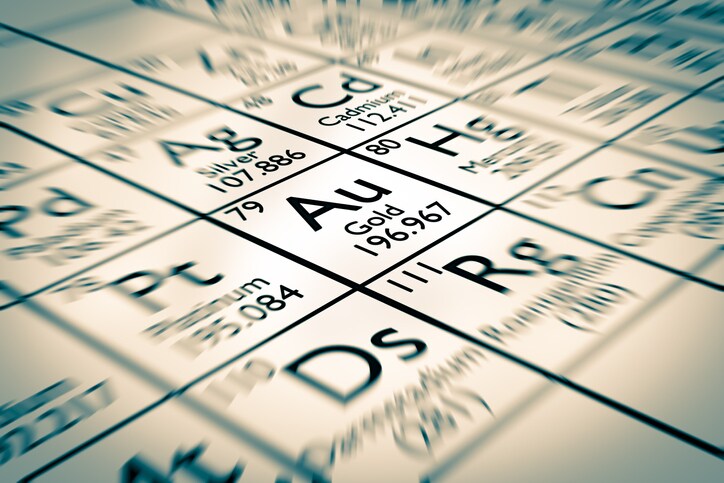 Precious metals are elements that are considered rare and chemically inert. They’re not abundant in nature, and therefore they have high economic value. Precious metals are used commonly in jewelry, industrial processes, or very often as investment vehicles.
Precious metals are elements that are considered rare and chemically inert. They’re not abundant in nature, and therefore they have high economic value. Precious metals are used commonly in jewelry, industrial processes, or very often as investment vehicles.
The four primary precious metals are gold, silver, platinum, and palladium. Depending on the application, there are common alloying elements that can be mixed with the main precious metals to improve the properties of the final product. There are other elements of interest are that are also used in non-precious metal jewelry or accessories.
When buying, or selling precious metals, one should be familiar with three main terms describing the precious metal: karat, fineness, and troy ounce.
- Karat is a grading system to determine the purity of gold. 24 karat is pure gold, so one karat is equal to 1/24th of the pure gold in the alloy. If you do the math, one karat is about 4.16% gold, 14 karats is about 58.3%, and 18 karat is 75% gold, and so on.
- Fineness is the proportion of the pure precious metal in the alloy. This is often expressed in parts per thousand. If you look closely at a gold bar, sometimes you will see the number 999, which indicates the fineness. It means the bar is 99.9% pure.
- Troy ounce is the measure to determine the weight of the precious metals. This is a very old term that dates to the middle ages. A troy ounce is about 31.1 grams, as opposed to a regular ounce, which is about 28.35.
It is common to find five different types of gold on the market:
- Fine gold, which is basically pure gold with fineness of 999 or above.
- Gold alloy is simply gold that has been mixed with other elements.
- Yellow gold contains silver as the main alloying element.
- Rose gold contains copper as the main alloying element.
- White gold contains either palladium or nickel as the main alloying elements.
Just like in any other businesses such as pawn brokers, cash-for-gold operations, jewelry stores and gold traders, we encounter some risks and challenges. One risk involves the material. There is a possibility of overpaying the seller because you cannot determine the correct karats or because you think it’s really solid gold when, in reality, it’s a plated material. Another challenge is determining what other precious metals besides gold are present in your sample. Sometimes you have other precious metals that are valuable, like palladium or platinum, and you can’t really see them just by looking at the piece. Sometimes the piece can contain non-precious metals such as nickel, or even some toxic metals like lead.
Verification tests that business use to combat these risks include the scratch and acid test, which is widely used but not very accurate and potentially dangerous. The most precise method is fire assay. However, this method destroys the sample. Laboratory methods with expensive machines require extensive sample preparation. Finally, there is portable X-ray florescence (XRF), a non-destructive method that measures up to 22 elements in one reading. Therefore, if you are a businesses that needs an accurate, fast, easy, non-destructive analysis method for a reasonable price, portable XRF analyzers are one of the best possible solutions among all the techniques.
We’ve gone into more details about analyzing and verifying precious metals and precious metal alloys in our webinar Not All that Glitters is Gold. You can download the recording anytime and see a demo of the analysis in action.
- Watch the recording: Not All that Glitters is Gold.






Exploring the world of precious metals and alloys opens up a treasure trove of insights. The blog delves deep into the significance and applications, making it a must-read for anyone curious about these valuable elements.
Great breakdown of precious metals and their alloys! The article provides valuable insights into their properties, uses, and the importance of accurate testing methods. It’s a must-read for anyone looking to deepen their understanding of these valuable materials.